Commo Tally Who?
Marseille, France As we listened to our Pimsleur’s French lessons, we felt like deer in headlights. This was...
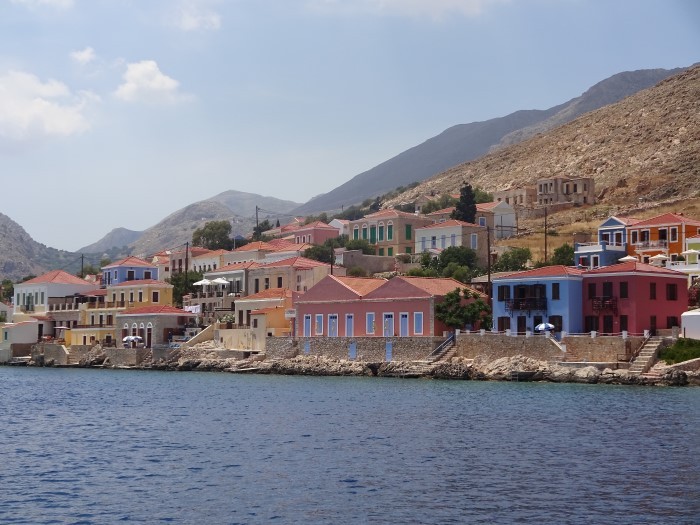
Southern Dodecanese Islands, Greece
It is often difficult to leave a port or anchorage where you are comfortable. There is always sense that you could stay one more day. That’s how we felt about leaving Rhodes, we could easily stay one more day, or two, or three. But when cruising, weather always wins over the heart, so off we went on the road to Crete.
The area between Rhodes and the southeast tip of Crete is known as the “windy corner” of the Aegean Sea. When the north winds and seas funnel down the Aegean and hit the huge mountains of Crete, they are forced to turn west. This creates very turbulent winds with large and confused seas, notoriously treacherous for small sailboats like Berkeley East.
We have been through plenty of rough passages, but we will take calm over chaos any day, even if it makes for a humdrum crossing without an exciting story to tell. So when we saw a window where the wind was forecast to be lighter (under 15 knots), we pushed to get to Crete with just three quick stops.
The Southern Dodecanese islands between Rhodes and Crete are not on the typical tourist path. They have very small populations, limited resources and infrequent ferries. Our first stop was Chalki (pronounced Hal-Key) a small island to the west of Rhodes. The main, and only village, is situated around the small harbor, beautifully painted and as we approached, it reminded us of a quaint Italian seaside hamlet.
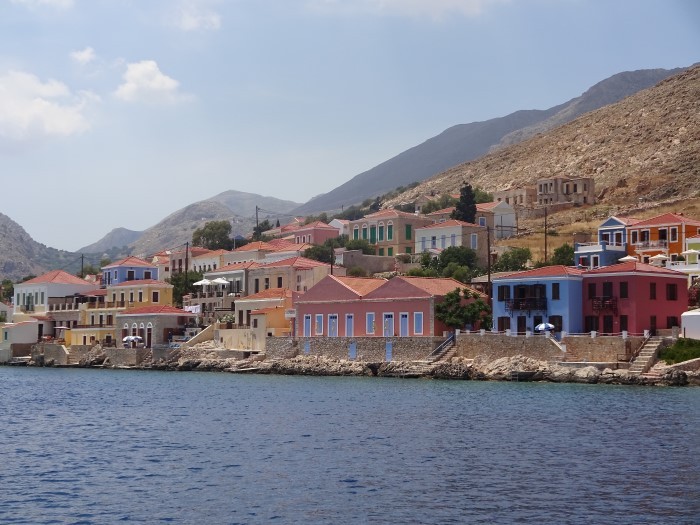
With less than 300 permanent residents following emigration in the mid-20th century, Chalki was almost completely abandoned. A sizable group of the residents (sponge divers) moved to Tarpon Springs, Florida, establishing the Greek-American community that continues there to this day.
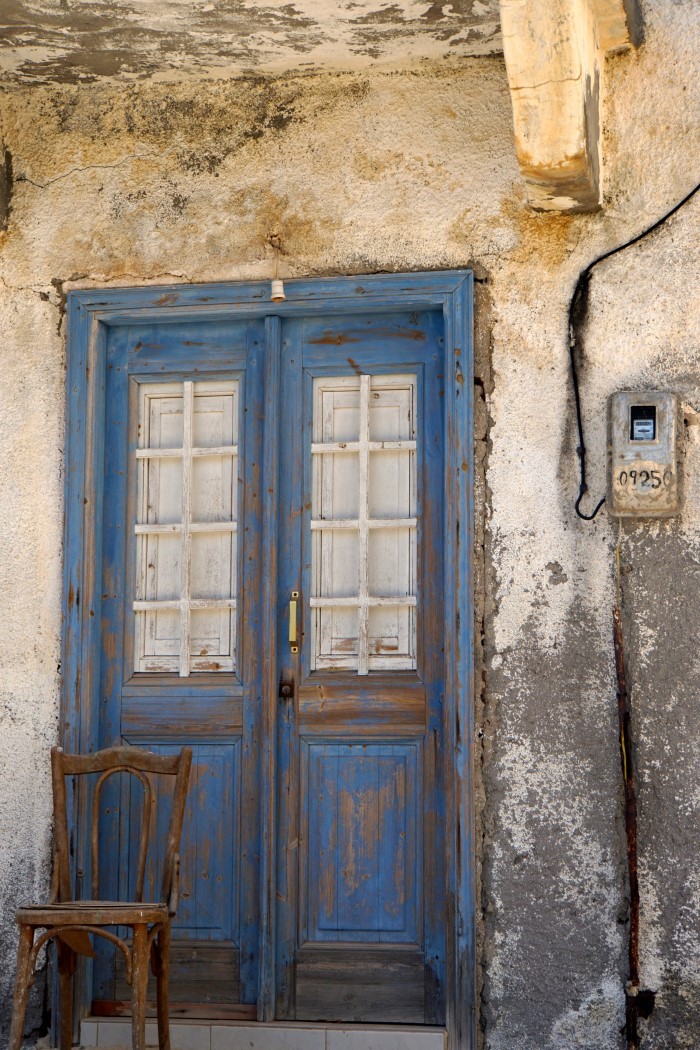
We anchored off the town and went in to explore. An hour later we returned to BE. While it looked charming from a distance, there was little to make us want to spend time on land there. But it was a nice spot to swim and a calm place to sleep, with an early departure for island number two on the road to Crete, Karpathos.

During the seven-hour sail to Karpathos, we began to understand this area’s rough windy reputation. By the time we arrived at Pigadia, the capital of Karpathos, the wind had picked up to 25 knots on the nose with very jumbled seas. The town dock was sideways to the wind, and while there was plenty of room for BE, we saw this as a situation with the potential for an uncomfortable, ugly night. So we opted for the more boring option of anchoring off the beach. It is said that Karpothos has beautiful beaches, but we were not there to sightsee, we were on a road trip, we were moving the house.
Day three was a surprise with calm seas and a light breeze. The winds of the previous day had died away and BE was once again a motorboat. We arrived at the island of Kasos, the southernmost Dodecanese island, to see a large Greek warship at the dock. We could have docked right behind the warship, but the armed men on the ship’s deck told us that probably was not the most sensible plan. As we circled the harbor trying to figure out what to do, a small fishing boat turned toward us, the driver called in English saying there was room in the inside harbor and to follow him. We did, wondering if he understood that we need 2 ½ meters of water to stay afloat. As we turned into the small opening between the rocks and large concrete dock, we could see room for us and maybe one other boat at the dock. Now was it deep enough? Two men got off the fishing boat and motioned us to come alongside. The process of docking BE involves getting a lot of fenders positioned, docking lines ready and, in this case, turning the boat around in a harbor only twice as long as BE is. With just two of us managing all of this, we were very busy and lost track of watching the depth. After docking, BE’s depth gauge showed eight feet of water under her keel. We had six inches to spare! Hopefully there weren’t tides in Kasos.
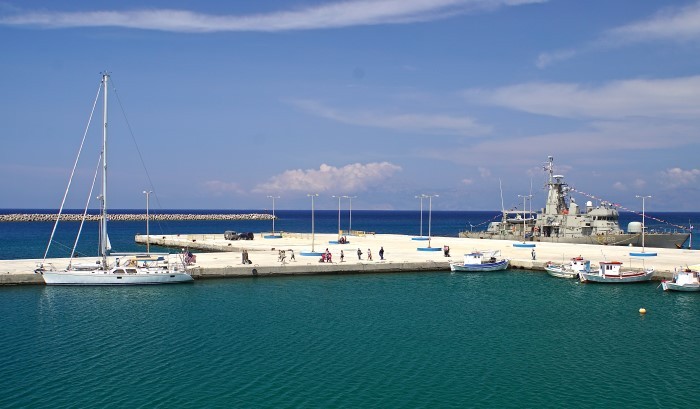
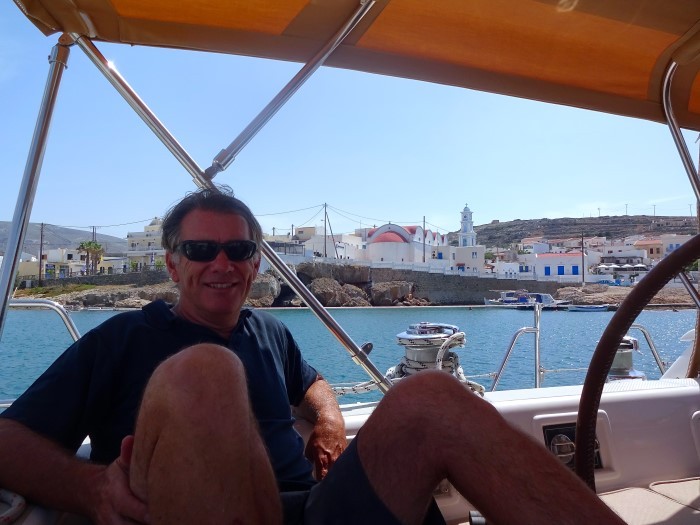
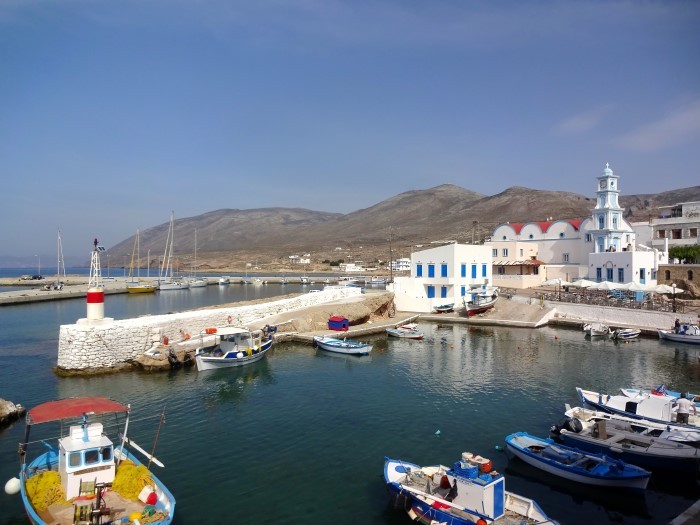
It turned out that the warship at the dock was in Limin Fri for the remembrance of the massacre of more than 7,000 of the islands 11,000 inhabitants by the Turkish governor of Egypt in 1824. The adult children who had left the island returned home to commemorate the massacre, locally known as Holocaust Day. We had arrived at the end of the commemoration, in time to join the locals for lunch and to watch the returning children board ferries back to their homes.
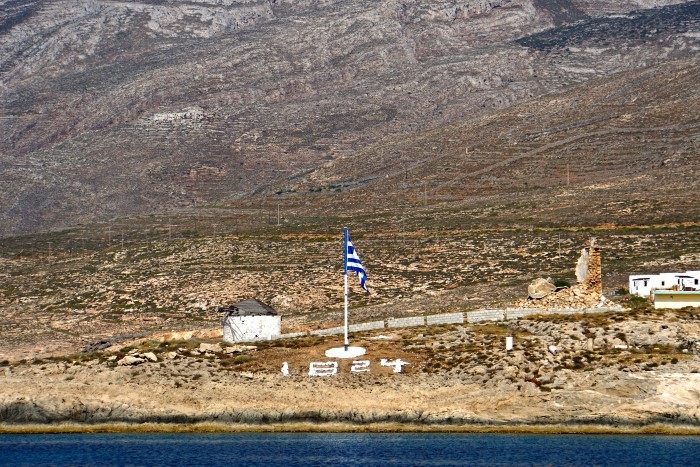
Up early for another sunrise departure on the fourth, and hopefully final, day of the road trip to Crete. This was the most uncertain day, as we had to cross the 30 miles through the windy corner of the Aegean. While at the dock in Kasos, we met people on two boats that had come from Crete and said they had constant 35-knot winds there for weeks. And we know people who had gotten this far on the road to Crete, only to have to turn back; so we were prepared for the worst. We had picked out two potential landing spots on Crete, the closest harbor if things were rough and a more preferable stop if not. We were also ready to bail and go back to Kasos if necessary. But on this particular day, the windy corner was the calm corner and we made good time in near peaceful conditions. We even had the anchor down and were celebrating our arrival in Crete when the rain came, giving BE a much-needed wash after her four-day road trip.

Previous Comments
looks like someone had a good wifi day!!
Johanna & I are Linda McOrmond’s parents. We enjoy your blogs with the great pictures. THANK YOU